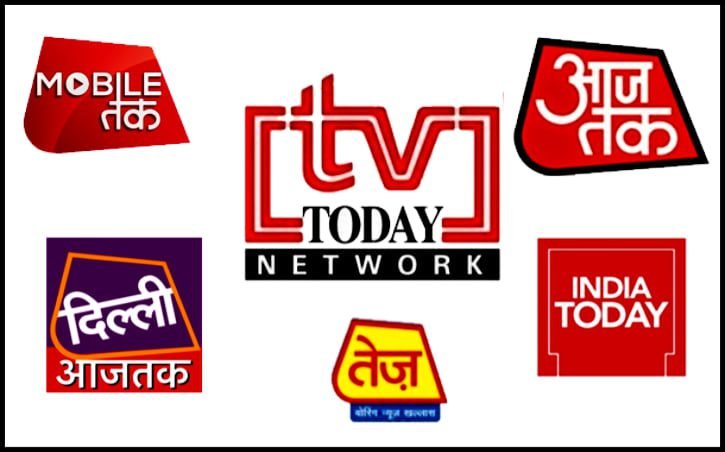Media Convergence and Hybrid Media
The phrases “hybrid media” and “media convergence” have become more critical in today’s fast-changing media environment. Hybrid media—the product of blending conventional and new media—enables the transmission of content in various ways and many modes of communication.
In This Article
Hybrid Media: A Blend of Old and New
In its simplest form, hybrid media refers to the strategic blending of old and modern media to communicate messages effectively. In this method, information is disseminated via various communication platforms. To illustrate this concept in the Indian context, let’s examine some real-world examples:
India Today Group: The India Today Group, one of India’s well-known media conglomerates, is a prime example of hybrid media. It runs multiple television channels in both Hindi and English, like Aaj Tak, India Today TV news channels, a music label called Music Today, publishes a weekly magazine called India Today and has a significant online presence through its website and mobile apps. They can connect with a variety of audiences by using several platforms.

Brick and Mortar Business: Even traditional businesses are adopting hybrid media strategies. Think of a physical store that also has a website. They use various techniques to efficiently promote the website, including a Facebook page, search engine optimization (SEO), search engine marketing (SEM), newspaper ads, billboards, and hoardings. This blending of traditional and digital venues for advertising ensures a greater audience reach and engagement.
The ALIVE App is an excellent example of augmented reality and hybrid media. This mobile application allows users to watch news video content by scanning specific news items printed in “The Times of India” newspaper. By merging print and digital media, ALIVE App enhances the reading experience with dynamic video content.

QR Codes: India has seen a rise in using QR codes as hybrid media tools. Users can use smartphone QR code apps to scan these encrypted codes printed in newspapers and publications. These codes perfectly connect print and digital media since they frequently contain online links to particular products or applications in Android or iOS marketplaces.
Chromecast: Another example of hybrid media is the thumb-sized media streaming gadget Chromecast. Users may cast content from their phones, tablets, or laptops onto the big screen by inserting it into the HDMI port of a TV. This technology combines the world of traditional television and the practicality of digital streaming.
Media Convergence and Hybridization in India
Convergence comes from the prefix con-(meaning – together) and the verb verge (meaning – to turn toward). Convergence refers to two or more things coming together, joining together, or evolving into one. Knowing the broader context of media convergence is essential to understand hybrid media fully. Media convergence involves the cooperation and collaboration between different media forms and platforms. It represents blending media, telecommunications, and computer technology into a single digital form.
In the Indian media landscape, convergence is evident in various forms:

Telecom Service Providers: Indian telecom service providers have embraced convergence by providing extra services like digital video, VoIP, and high-speed data in addition to traditional telecom infrastructure. Because of this convergence, people can access various media content on their mobile devices.
Digital News Portals: Leading Indian news organizations have adopted media convergence by operating digital news portals alongside traditional print or broadcast outlets. All significant publications in India have a robust online presence, including a website and mobile app, to complement its print edition. This convergence ensures that news is accessible to a broader audience through multiple channels.
Television and OTT Platforms: The convergence of television and over-the-top (OTT) streaming platforms is a significant trend in India. TV channels have a strong presence on OTT platforms, allowing viewers to access content on-demand. At the same time, OTT platforms like Netflix and Amazon Prime produce original Indian content, blurring the lines between traditional TV and digital streaming.

Social Media: Social media platforms like Facebook, Instagram, and Twitter have become essential tools for media convergence in India. News organizations utilize these platforms to disseminate information, interact with audiences, and increase website traffic. Citizen journalism on social media has also been critical in shaping public conversation.
Impact and Challenges of Hybrid Media in India
Although hybrid media and media convergence have many benefits, they pose unique challenges and considerations in the Indian context.
Advantages:
- Broader Reach: Using various platforms and formats, hybrid media enables content to reach a larger audience. This is especially helpful in a diverse and vast geography like India.
- Enhanced Engagement: Interactive features of digital media enable greater engagement and feedback from the audience. Social media platforms facilitate real-time conversations and discussions.
- Cost-Effective: Online platforms often offer cost-effective advertising and marketing solutions for businesses, especially small and medium enterprises (SMEs).
- Diverse Content: Hybrid media facilitates the creation of diversified content that appeals to various populations and interests.

Challenges:
- Digital Divide: The digital gap in India is still very wide, with many rural areas lacking access to the internet and electronic gadgets. This gap limits the reach of hybrid media.
- Misinformation: Hybrid media’s ability to disseminate information quickly can contribute to the spread of false information and fake news. The need for media literacy is urgent.
- Privacy Concerns: The protection of personal information and the security of digital platforms are now urgent concerns. Data security for users is a top priority.
- Monetization: Because so much free content is available online, traditional media firms are experiencing difficulties monetizing digital content effectively.
Conclusion
The landscape of mass communication and journalism in India has changed due to hybrid media and media convergence. These methods have increased the audience reach, engagement, and variety of content distribution using old and new media. They offer many benefits, but they also come with difficulties in monetization, inaccuracy, accessibility, and privacy.
As India continues its digital transformation, media organizations, businesses, and policymakers must negotiate the ever-changing media ecosystem with extreme care. Media literacy, the development of digital infrastructure, and ethical journalism practices are critical components for India to realize the full potential of hybrid media. With the right strategy and a commitment to ethical communication, hybrid media may be crucial in determining the country’s future of mass communication and journalism.




